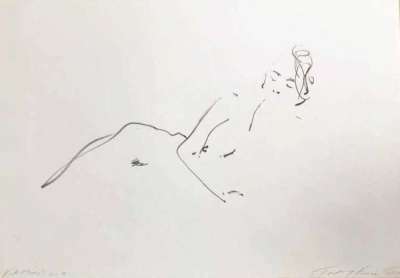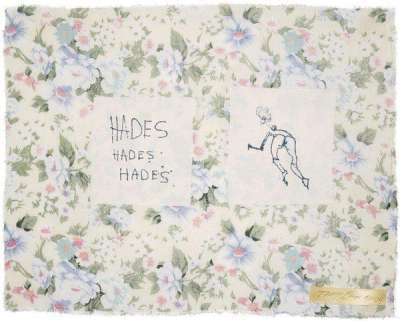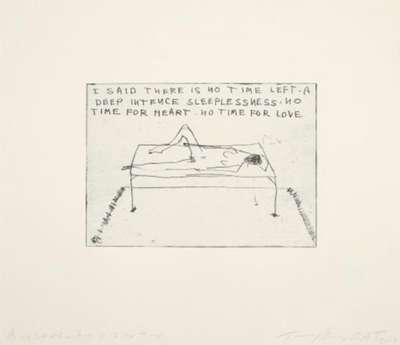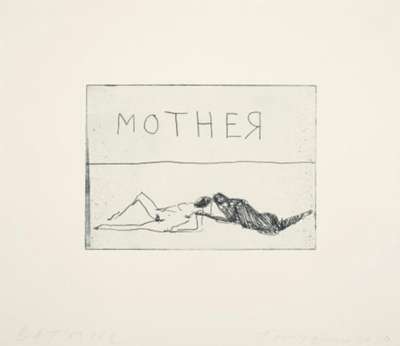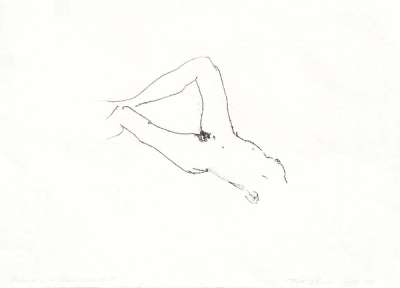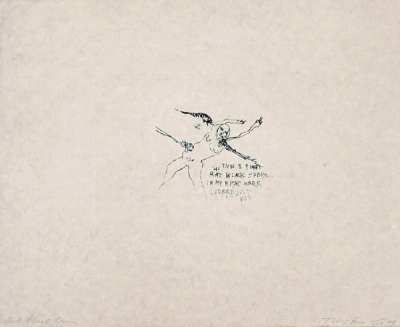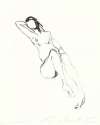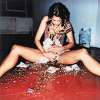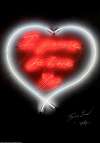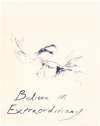Nude
Drawings
Tracey Emin’s Nude Drawings collect quick sketches of nude figures, presented as monoprints, capturing her immediate, confessional voice via a lyrical, loose drawing style. Set in intimate interiors, these works are both highly personal and widely influential in the art world, speaking to the universality of love, sex, loneliness, and desperation.
Tracey Emin Nude Drawings For sale
Nude Drawings Value (5 Years)
With £22432 in the past 12 months, Tracey Emin's Nude Drawings series is one of the most actively traded in the market. Prices have varied significantly – from £200 to £5500 – driven by fluctuations in factors like condition, provenance, and market timing. Over the past 12 months, the average selling price was £2804, with an average annual growth rate of 7.17% across the series.
Nude Drawings Market value
Auction Results
| Artwork | Auction Date | Auction House | Return to Seller | Hammer Price | Buyer Paid |
|---|---|---|---|---|---|
 Kate Tracey Emin Signed Print | 9 Jul 2025 | Bonhams Knightsbridge | £2,550 | £3,000 | £3,850 |
 Hades, Hades, Hades Tracey Emin Signed Print | 24 Oct 2024 | Forum Auctions London | £808 | £950 | £1,200 |
 Rat Black Sperm Tracey Emin Signed Print | 5 Oct 2024 | Tennants Auctioneers | £510 | £600 | £700 |
 Rose Tracey Emin Signed Print | 25 Jun 2024 | Germann Auctions | £765 | £900 | £1,100 |
 No Time Tracey Emin Signed Print | 24 Feb 2022 | Chiswick Auctions | £765 | £900 | £1,200 |
 Mother/Brother Tracey Emin Signed Print | 24 Feb 2022 | Chiswick Auctions | £723 | £850 | £1,150 |
 Kissing You Tracey Emin Signed Print | 25 Feb 2021 | Bonhams New Bond Street | £1,700 | £2,000 | £2,550 |
Sell Your Art
with Us
with Us
Join Our Network of Collectors. Buy, Sell and Track Demand
Meaning & Analysis
Tracey Emin’s Nude Drawings have come to enjoy a privileged status in the history of art as well as in Emin’s vast production. Since her first lithograph was published in 1986, Emin’s monoprints have produced some of the most recognisable and defining images made by the artist, most notably her quick and sketched rendering of naked bodies.
In works like Kissing You, Hades Hades Hades and No Time, the rawness of the images and the rushed movement of the lines evoke a highly expressionistic art of melancholia and intimacy. Not by chance, Emin’s nude drawings have had notoriously critical history, with associations to the works of Egon Schiele, Lucian Freud and Edvard Munch being made. In the drawings, Emin’s line is immediate, reminiscent of an urgent visual outpouring of feelings, rather than rationally mediated and studied. The immediacy of Emin’s gesture is facilitated by the material conditions of working on paper and contributes to what many identify as the confessional character of Emin’s art. This has caused critics to compare her artistic process to a visual stream of consciousness.
Set in intimate and private interiors, these images speak of love and sex, but also loneliness and desperation, reflecting some broader themes explored by Emin in seminal installation works like My Bed. The intensity of the emotional quality but also the vulnerability of the subjects within the images have come to characterise Emin as an artist of turmoil. It has also led critics like Jonathan Jones to champion Emin’s art for its “heroism”, stating “her art is serious because it focuses relentlessly on one person’s joy and anguish.”
The presence of writing within her drawings heightens the intensity of the images, as it is not only in the title that writing becomes a communicative tool exploited by the artist. Whilst Emin purposefully chooses evocative titles for her drawings, it is in the rushed and laconic lines that the urgency of her art best comes to life. In numerous interviews, the artist clarified that the writing in her images is oftentimes misspelt but this is no naive mistake. Rather, the lack of polish in the text enhances the rawness of the images, further making them come to life for the viewer. In No Time, Emin writes: “I said there is no time left. A deep intence sleeplessness. No time for heart. No time for love”. The text reads as Emin’s own train of thought, opening a door into the emotional turmoil of Emin herself, as well as her fictional characters. In Rat Black Sperm, Emin claims “Rat Black Sperm in my Nightmare. Looked just like you”, which evokes a message left to a long lost lover.
The poignant and direct character of Emin’s art best comes to life in this series, bringing together her interest in the art-historical nude and her art of intimacy.
